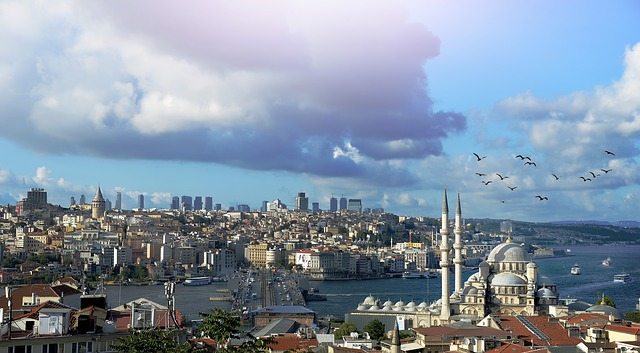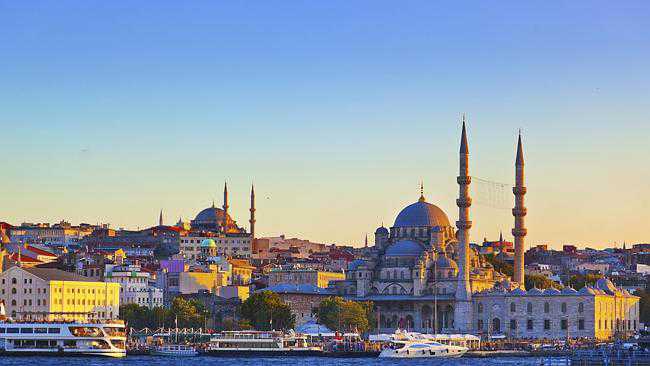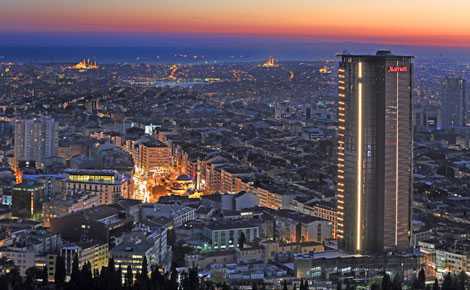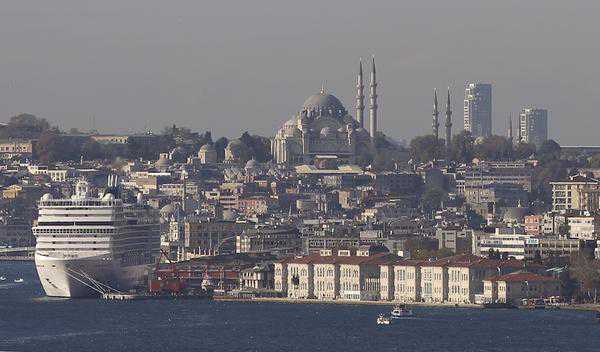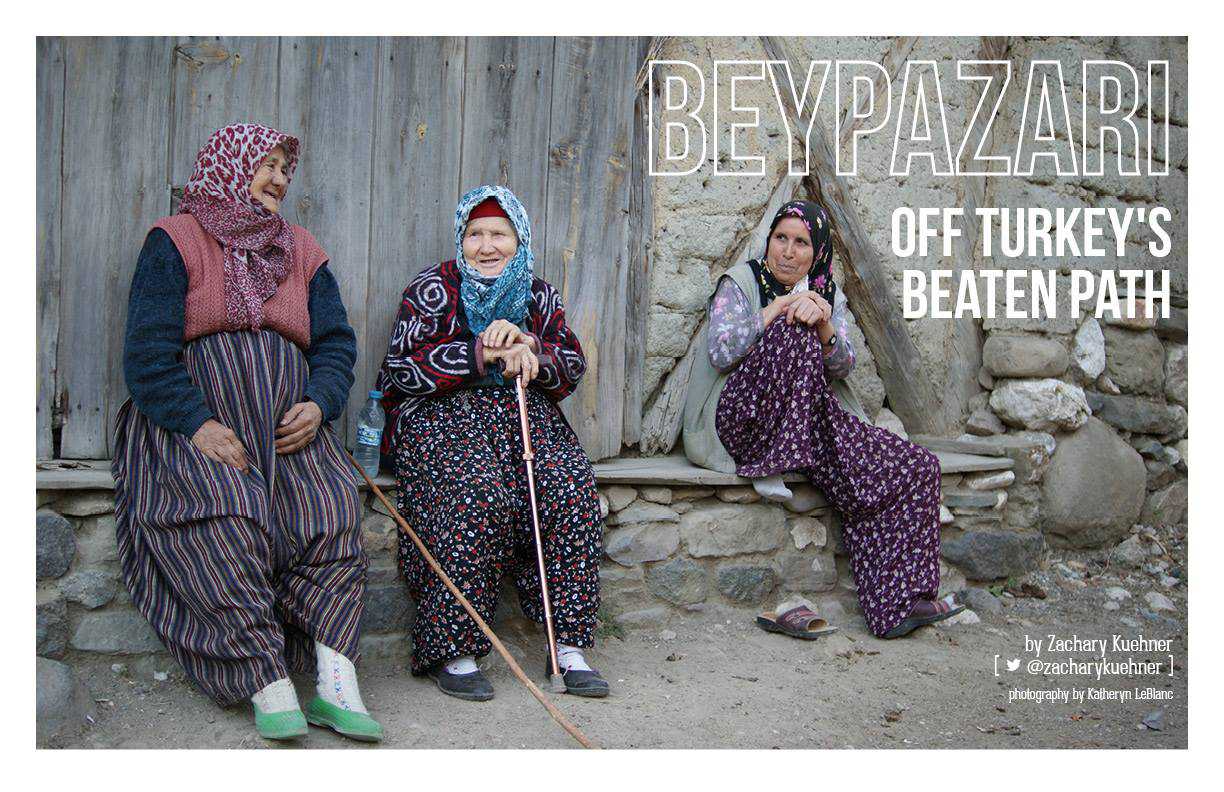Helen Beatty finds out that her London cabbie was correct when he praised the city as one of the greatest on earth
Istanbul?” cried the London cabbie, after I told him the city I’d most like to see. “The greatest on Earth!” Then he pulled over, spun round in his seat and waved his arms around as he reeled off place after place, how to get from the airport by tram, the way it rattles into the city over the bazaar, where to eat, what to see…
Now, when friends ask how our holiday was, I find myself acting pretty much the same.
“Amazing!” I answer, launching into tales of the ancient spice and silk routes, Emperor Constantine and the early Christian church.
But the most astonishing thing, I say (before their eyes glaze over), is the sheer size and growth of the modern city.
At around 14million, the population of Turkey’s largest city is almost double London’s.
As far as you can see there are regiments of skyscrapers that dwarf nearly all our capital’s and giving Manhattan a run for its money. Then there’s the sheer energy of the city – no wonder it’s enjoying an economic boom, with plans for the biggest airport in Europe, and was recently named the world’s top tourist destination. Two thousand years after dominating the bridge between Europe and Asia, Istanbul is doing it again.
Even more astonishing is that traces of the ancient Greek capital Byzantium – later the Roman capital Constantinople – still survive.
You can still walk into the great domed Hagia Sophia basilica as worshippers have for the past 1,400 years (entry £7, hagiasophia.com ). There you can climb dark ramps of stone, slippery with time, to galleries overlooking the spot Romans went on to call the centre of the known world.
You can also witness the ingenuity of Roman engineers who recycled old temple columns to prop up a giant tank to store water from the Belgrade Forest – the Basilica Cistern (entry £3).
It is said that centuries later, when the Ottomans invaded the city, they had no idea the cistern was there until canny residents realised they could lower buckets through their cellars to collect fresh water and even fish.
Back above ground we explored the covered passages of the Grand Bazaar, largely stocked with souvenir rugs, lamps and slippers. Outside we found 21st century Istanbul’s real markets – stall-lined streets each specialising in one item, from vests to children’s shoes or sunglasses, and most with a refreshing line in sales patter.
In one narrow road, a man sidled up to us and whispered: “Please, sex…?” Startled, I turned to see him waving towards a stall of footwear – one of at least 30 shops in the crammed street selling…oh, socks. We followed the smell of woodsmoke and grilling lamb to another specialised road of restaurants where salesmen gently muttered: “Doner, shish, pizza..?”
Our first day was spent excitedly rushing from one ancient monument to another. The heart of the old city, the Sultanahmet, is small enough to walk round, with waves of restaurants and markets lapping at the edges.
My partner Pieter and I had specifically chosen a hotel, the Empire Palace, that was in the old quarter – its rooftop breakfast room overlooked the spectacular Topkapi Palace.
It meant we were well placed for the main minaret-topped mosques and ancient sites as well as beautiful hidden courtyards and madrasas (Islamic schools). We knocked on the door of one madrasa and were allowed in to look around the quiet fountained courtyard as kittens played at our feet.
By day two we were ready to explore more modern parts of the city.
It was easy to get tram tokens from machines on the street then rattle over Galata Bridge, past lines of fishermen, to Karaköy. From there you can buy metro or underground funicular passes then the city is yours to explore.
Taksim Square seemed an obvious starting point. A year ago plans to redevelop this huge green lung leading to acres of trees and parks sparked huge rallies with violent clashes between protesters and police. The trouble has died down since elections in March. Foreign Office advice this week was to stay away from demonstrations if there are any more.
From Taksim, heading south, there is a long pedestrianised shopping street, which gradually turns into a hip area called Beyoglu, crammed with bars and leading off to twisting streets with trendy restaurants offering a much more laid-back feel. It is perfect for a supper of mezes and seafood which, in Istanbul, is wonderful. Choose from a fun restaurant with people singing at the next table or somewhere cool and stylish overlooking the sea.
After a couple of days in the city we decided to do as the Turks do when the summer beckons and head for the Princes’ Islands.
A palace in the 6th century, then a place of exile, by the late 1800s the islands became a fashionable destination for foreigners (including the Russian revolutionary Leon Trotsky, who lived there in the early 1930s). These days the islands are an escape from the city’s stifling August heat, where people relax under cool pine trees or on quiet beaches.
The ferry ride (£1.40) to the islands is worth it in itself. Just after ours left Istanbul, a call to prayer sang out from one of the city’s mosques and rolled out over the water.
Seconds later another chased it over the waves, and another, and another, until all we could hear outside was the overlapping song, the cry of gulls and the sound of the wind.
Back inside the boat, families were buying coffee and crisps and settling down for the entertainment – the spiel of the hawkers who try to sell seemingly useless gadgets. Ours was hysterical. He had half the boat in stitches and did a brisk sale of torches on sticks. I caught another passenger videoing it on his iPad, giggling throughout. It’s probably on YouTube if only my Turkish was up to finding it.
After about 90 minutes we pulled into the largest island, Büyükada. Cars are banned but you can hire a bike or catch a horse-drawn cab.
Fuelled by a snack near the harbour, we explored on foot. After a few streets of wooden houses we passed campsites under trees overlooking sandy bays and picnic areas. Further on we hit a steep track up to a church. The path is lined with hedges and trees covered by colourful ribbons and ties, each tied there to represent a prayer made on the way up.
St George church and monastery is well worth the climb. The pretty restaurant and café next door have panoramic views back over the sea to Istanbul. Our stroll back to the ferry enjoying the sea air and the sun on our backs was bliss. That London cabbie was right: one of the greatest on Earth.
Travel File
Travel File
What to eat: Seafood is fantastic, but we fell in love with Turkish meze – little dishes of everything from hot stuffed peppers, to aubergine salad and mini pastries. For something on the go, try pide; a thin and crisp type of spicy pizza, or another local speciality; fried fish in crusty bread, famously sold from gold-painted boats at the foot of the Galata Bridge.
Where to eat: There are lots of restaurants in old Sultanahmet area but for a posher lunch, try Locanda Maya, in Karakoy. Their courgette fritters are so popular the recipe is written on the wall. Then head over to nearby Karabatak cafe, based in an old metal workshop – great for a fun coffee.
Currency: The Lira is currently good value for the pound – lunch can easily come in under £5 a head, even smart restaurants can be under £15. A glass of Turkish tea can be around 50p, a bottle of beer around £2.50.
Tip: To visit the Blue Mosque, the Suleymaniye, or any other still used for worship, women are asked to cover heads and shoulders. Take your own shawl if you don’t want to use the ones on offer.
What’s the deal : Anatolian Sky Holidays ( www.anatoliansky.co.uk 0844 273 3586) can offer a three night stay at the Best Western Empire Palace Hotel from £489 per person, including return flights from London and transfers. Price based on two adults sharing on bed and breakfast basis, travelling between 16th and 30th June.
A two night add-on to the Princes Islands is available from £149 per person including accommodation at the Merit Halki Palace on Heybeliada on bed and breakfast basis and transfers to the port in Istanbul. (Ferry ticket not included.)
Getting there: Pegasus Airlines flies from Stansted to Istanbul Sabiha Gokcen airport twice a day; one-way fares start at £72.99 including taxes and charges. It offers scheduled services to 31 destinations in Turkey and 45 internationally. For details, or to book, visit flypgs.com/en
Follow us: @DailyMirror on Twitter | DailyMirror on Facebook


